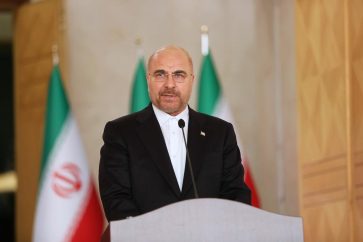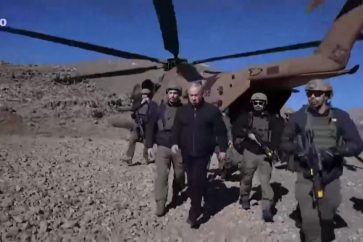Somaya Ali
Translated by Areej Fatima Husseini
“No external factor enables a government or an army to stabilize, unless this government and this army enjoy a popular support that safeguard them.”
Egypt’s former Assistant Foreign Minister Hussein Al-Haridi in a recent interview
The pre-planned war in Syria has spanned twelve years and is still ongoing. It is well known that this warfare is not limited to battlegrounds but rather takes various economic, social, and political forms, in a bid to deplete President Bashar Al-Assad’s government. Surprisingly, all of these endeavors, however, were futile.
The Gloomy Tunnel
The arrest of two men in Daraa in March 2011 and the eventual outbreak of sporadic demonstrations in several regions, formed the full-fledged launch of a bloody scenario or even a global war that later appeared that it has been previously plotted. That was at a time when the entire region was experiencing “revolutions” dubbed as the “Arab Spring.”
It has been clear that all intents and schemes including the normalization of ties with the Zionist enemy- through subduing all resistance movements- as well as compensating for the defeat in Iraq, pass through Syria.
Soon after, Western powers, led by the United States, joined Arab countries in raising slogans such as “the freedom of the Syrian people” and “human rights in Syria.” Such moves were aimed at overthrowing the Syrian government’s legitimacy, neglecting thousands of Syrians who protested in support of President Al Assad.
In June 2012, world powers assembled in Geneva to declare “the necessity of a political transition.”
This declaration was only a pretext for escalating the demonstrations into a major military clash, resulting in the formation of organizations such as the “Free Syrian Army” (FSA) and the ” Jaysh al-Islam” (Army of Islam). These organizations comprised Syrians as well as a significant number of mercenaries from other Arab and Western countries, all with diverse backgrounds and agendas, who flocked to attack Damascus.
Since then, Syria has entered a dark tunnel: the country’s unity and sovereignty have been shattered, with almost all areas divided into pro and anti-regime factions. The emergence of Takfiri factions such as “Jabhat Al-Nusra” and “Ahrar Al-Sham” on the battlefield heightened the tensions.
Then in January 2014, the ISIL terrorist group took control of Raqqa and set out to govern vast areas of Syria and Iraq. Backed by regional and Western governments, these organizations have committed the most heinous terrorist acts against the Syrian people, as well as looting riches and systematically destroying the country’s infrastructure.
In addition to the military conflict, fierce media campaigns have intensified, relying on false flag chemical attacks in a bid to defame the Syrian government while disregarding the crimes committed by so-called “opposition factions.”
Syria Battles Bravely
Amid this reality, the Syrian state and its army stood firmly to protect the governing system and fortify Damascus, which had become a target for terrorists. The fall of the capital would have dealt President Assad a tremendous blow.
In September 2014, the US directly engaged in the struggle, organizing a coalition and assisting Kurdish factions under the pretext of eradicating “ISIL” in northern Syria. Later in 2015, and under the request of the Syrian government, Russia joined the war in a bid to aid Damascus in counter-terror operations.
This was a crucial turning point in the warfare, along with Iran’s and Hezbollah’s key roles in the battlefield and victories in more than one strategic battle, such as the clashes of Qusayr and Aleppo.
This video diplays scene of the couter-terror operations in Syria.
Such turning point reflected on Damascus’ recontrol of swathes of the Syrian territory, as well as keeping the threat of terror away from the capital and Aleppo. This was in addition to preventing Turkey, which aided the armed groups, from reaching its aim of dominating that region and eventually beating “ISIL” in the Syrian Badiya battles.
At the time when the military developments were unfolding in Syria, there was a political course emerging. Hence, when Russia, Iran, and the Syrian Army imposed a new status quo in the battlefield, the “Astana Talks” was established. The peace process came after the West and the UN yielded no substantive progress in the negotiations between the government and the so-called opposition, which remained split and withdrew the battlefield in favor of terrorist organizations.
Wary of Kurdish presence in Syria’s north, Turkey joined, afterwards, the Astana Talks as a guarantor state. This political process, which culminated in several rounds, concluded in a settlement, primarily brokered by the Russians and Turks in September 2018. The settlement involved Idlib and the northwest, which has been under terrorist control, resulting in a halt to fighting on those fronts.
Syria’s Outlook in 2020
On the eve of 2020, the Syrian state maintained control, as it had not done for the past nine years, except in the north, where the conflict created a kind of status quo represented by the limited presence of the US forces through several military bases. Undoubtedly, those bases were later utilized as a springboard for stealing oil and wheat. Also, there was a limited Turkish presence in the area under the pretext of countering the so-called Kurdish expansion.
On the other hand, the Israeli enemy found no means to voice concern over the failure of its allies and the victory of its foes. Thereupon, it occasionally breaches Syria’s airspace and launches strikes.
Despite this scenario in the country’s north, almost 12 years of war did not affect Syria’s Arabian identity, as the idea of its federalization had been buried.
This war has resulted in creating a powerful “Axis of Resistance” that extends from Iran through Iraq to Syria, then to Lebanon and Palestine. Consequently, Washington unleashed an economic warfare through the “Caesar” sanctions, depleting the Syrians who stood by their government.

In mid-2020, the Coronavirus pandemic spread all over the world, resulting in a stalemate in the Syria negotiations. Yet, the sanctions remained the most prominent feature in Syrians’ diaries.
Then in 2022, when the pandemic subsided, the war between Russia and the West in Ukraine commenced, casting a shadow across the entire world. The impasse was broken here by multiple communications reaching the gates of the presidential palace in Damascus, indicating what may be dubbed the “great turning point.” So, what happened, and what were the causes and effects?
To be continued in Part II.
Source: Al-Manar Website




